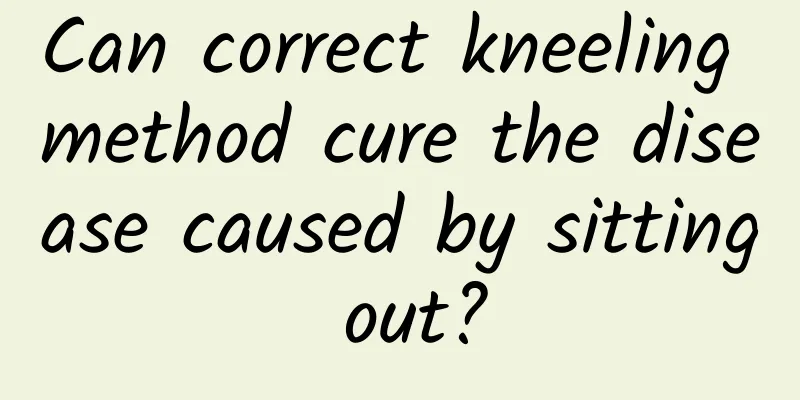What are the sequelae of cerebral infarction? What are the sequelae of cerebral infarction?

|
Cerebral infarction is a relatively serious brain disease, and it usually occurs suddenly. Mild cases can lead to paralysis, and severe cases can lead to loss of life. Generally, the elderly are prone to it, but nowadays, many young people suffer from sudden cerebral infarction due to life pressure and habits. Even if the cerebral infarction is cured, it may leave sequelae. How to exercise after cerebral infarctionFor those with milder sequelae, it is important to actively exercise. If the left hand is not flexible, you should move it more often. Do some simple housework to help train the left hand. You can also do some basic activities, such as joint activities, holding objects, clenching and releasing activities, etc. In short, you should move as much as possible. You can try massage and physical therapy to help restore normal limb function as soon as possible. For those with speech disorders, you should pay attention to speaking, try to slow down the rhythm, train slowly, and try to restore to normal. For patients with more serious sequelae, if they are initially paralyzed in bed, they need to perform necessary passive activities with the assistance of their family members to prevent the degeneration of limb movement function, which can be massage, turning over, joint movement, etc. In the later stage, the child can gradually start to sit, lie down, stand up, etc., and gradually regain the ability to take care of himself, eat, wash, and walk by himself; Then try to do simple housework activities, and after fully recovering, insist on moderate activities every day, mainly walking. Be sure to grasp the time and intensity of exercise. It should be noted that recovery from the sequelae of cerebral infarction is an extremely long process. Patients with cerebral infarction must be patient and must not have anxiety or negative emotions. Family members must provide good daily care and psychological care, communicate more with patients, help patients build up the courage and confidence to overcome the disease, face the disease optimistically, and actively cooperate with doctors in rehabilitation treatment. What are the sequelae of cerebral infarction?1. Shoulder problems.70% of patients with cerebral infarction will experience shoulder pain and mobility disorders, hand swelling and pain, and hand muscle contracture, which are common 1-3 months after the onset of the disease. With the help of a rehabilitation therapist, patients can raise their upper limbs, dorsiflex their wrists, and encourage active and passive movements. 2. Muscle spasms and joint contractures.In patients with cerebral infarction, part of the brain tissue is necrotic, the upper motor neurons are damaged, and the control of the lower motor neurons is lost, resulting in increased muscle tension and muscle spasms. On the other hand, long-term muscle contracture leads to joint immobility, followed by shortening and decreased elasticity of the joint soft tissue, which manifests as joint stiffness. A good way to recover is also active and passive exercise, and you can also let the affected limb bear weight and use orthopedic braces. 3. Difficulty swallowing.Patients with brainstem damage often experience dysphagia and dysarthria. Be careful when eating, starting with liquid food and soft food and slowly transitioning to normal food, and you can move your neck slightly forward to make it easier to swallow. Pouting your mouth, sticking out your tongue, and moving your facial muscles are all conducive to functional recovery. Can cerebral infarction be cured?Mild cerebral infarction, i.e. cerebellar infarction, is also known as lacunar infarction. This usually manifests as transient ischemic attack, and the symptoms are relatively mild and can be restored to normal. However, you should also take medicine on time and have regular checkups, otherwise there is a high possibility of a second attack. If the cerebral infarction occurs in a large area or in an important area, the patient's prognosis should be determined based on the time of treatment. In fact, after a cerebral infarction occurs, the most effective method with the least sequelae is thrombolysis or thrombectomy. However, thrombolysis and thrombectomy are both time-limited. If the patient can be sent to the hospital for thrombolysis or thrombectomy as soon as possible, the sequelae left in the future will be relatively mild, and the patient can even resume daily life. If the patient cannot be sent to the hospital in time, the time for thrombolysis or thrombectomy will be missed, and the patient's sequelae will be relatively severe, which mainly depends on late rehabilitation treatment. Early rehabilitation is very necessary, and rehabilitation exercises should be performed as soon as the condition stabilizes. Generally, bedside rehabilitation can be performed 24 hours after the onset of the disease. |
<<: What are the methods for storing green corn stalks? Why do corn seedlings grow very poorly?
>>: Can cows eat a small amount of urea? Why do cows like to eat urea?
Recommend
Can I prepare for pregnancy while taking anti-inflammatory drugs during menstruation?
We all know that many women feel stomach pain and...
What is the shelf life of green tea? What happens if you drink expired green tea?
Green tea is a common drink in our lives. It is l...
Back pain and fractures, are they caused by "crab disease"? This blood indicator is a "super detective" that can find the culprit!
Multiple myeloma, commonly known as "crab di...
Estrogen determines follicle quality
Follicle quality is very important for women, bec...
Real picture of fetus in amniotic fluid
During the period of discovering pregnancy, pregn...
Frostbite! What should I do?
What is frostbite? Which department should I go t...
Insomnia, chest tightness, shortness of breath after hysterectomy
Life is always more malicious to women, and women...
Symptoms of early threatened miscarriage
The occurrence of threatened abortion is related ...
Case of 8-month pregnancy after cesarean section
In daily life, we will encounter some mothers who...
What are the symptoms of retroflexed uterus?
Many women do not know and understand what retrof...
Is the chance of pregnancy high with uterine fibroids?
It will also affect the patient's fertility a...
How to know if the breast is unblocked
During the lactation period, it is very important...
What should women do if their hair becomes oily?
Many people, especially female friends, hope to h...
Placenta double vertex at the bottom of the uterus at four and a half months of pregnancy
Expectant mothers pay great attention to their ph...









![[Medical Q&A] Neonatal jaundice: Can jaundice be reduced by sun exposure?](/upload/images/67eff82a095dd.webp)